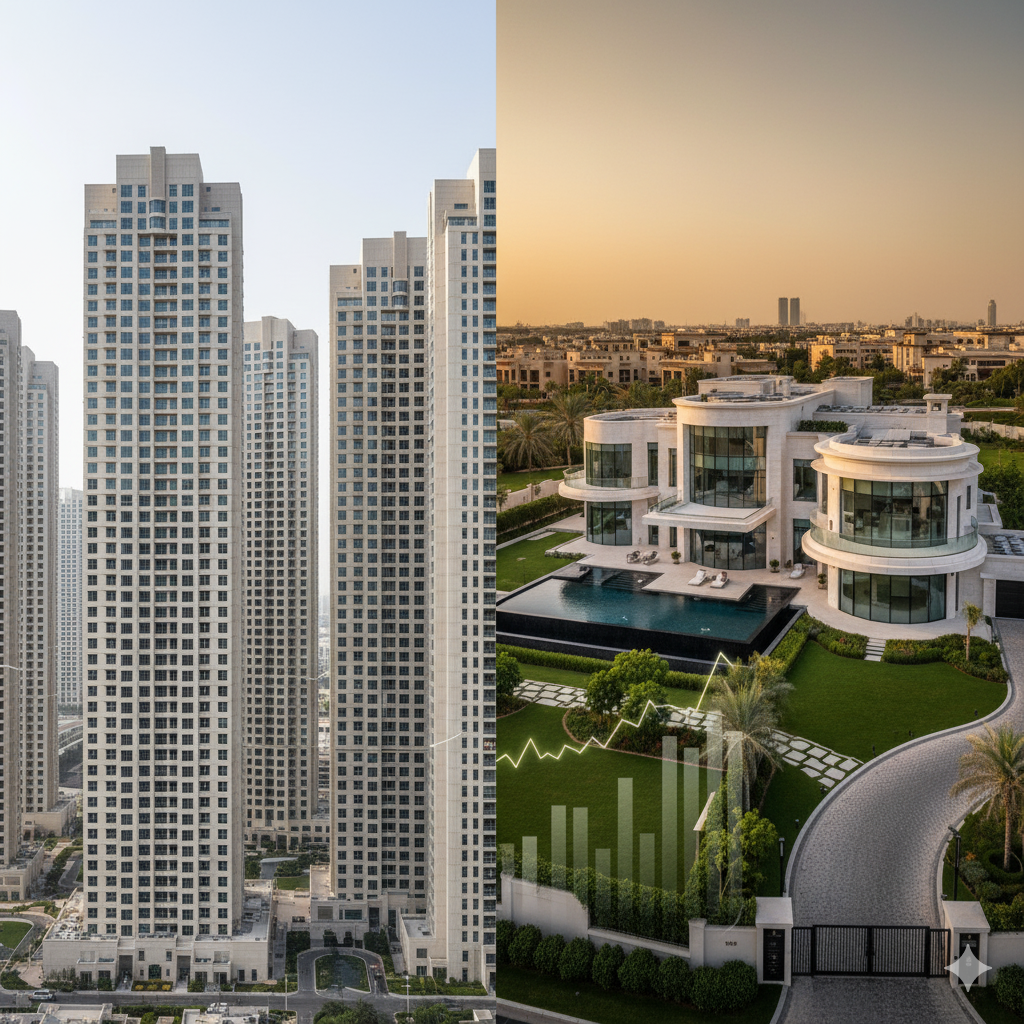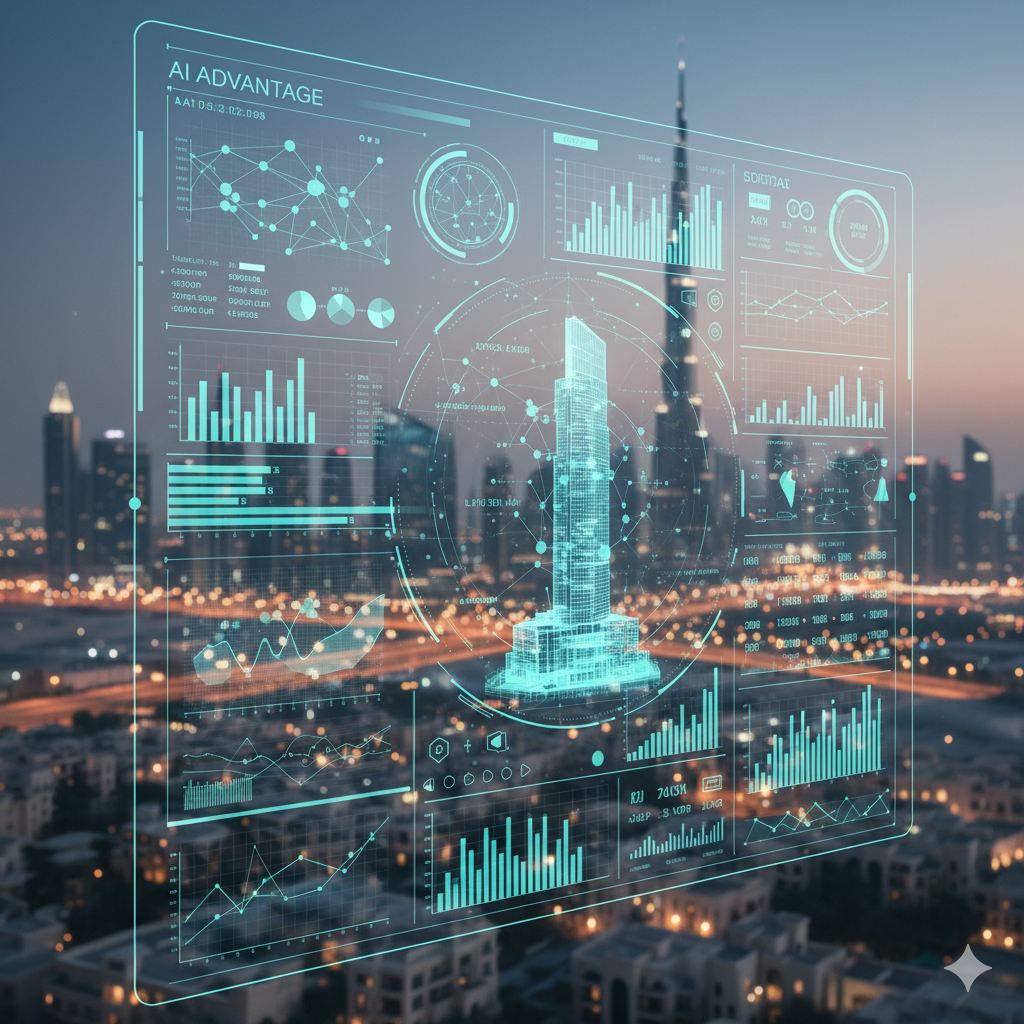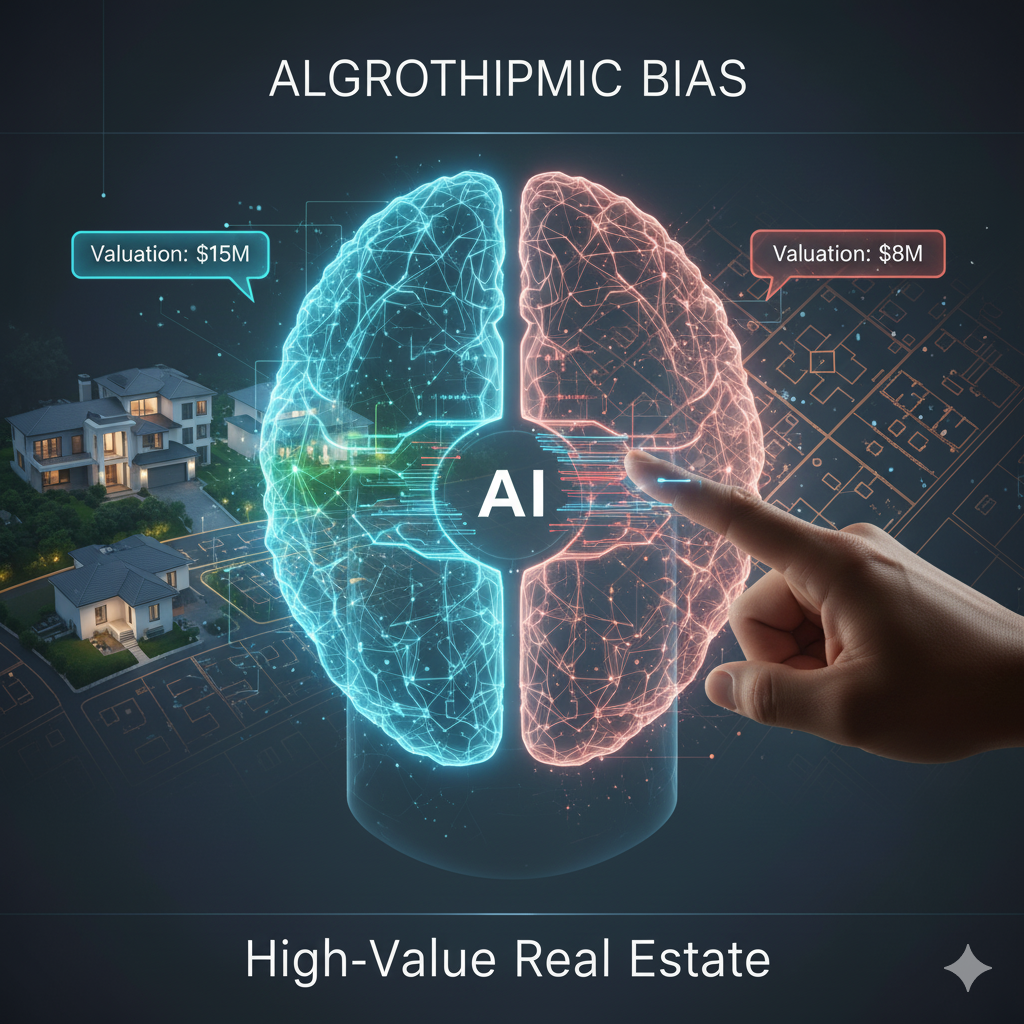Introduction: The Demand for Precision in an Imperfect Market
The world of luxury real estate is fundamentally different from the mainstream property market. A standard apartment building might have dozens of comparable units, allowing for relatively straightforward price benchmarking. However, a $50 million bespoke penthouse on Jumeirah Bay Island or a custom villa in the Dubai Real Estate Market is not just a collection of square footage; it is a piece of art, defined by intangible factors like view, provenance, and architectural signature.
The recent rise of Artificial Intelligence (AI) and automated valuation models (AVMs) promises to bring speed and scale to an industry historically reliant on human judgement. The question before us is critical: In the elite, high-stakes segment of property, can AI be truly accurate? Or is it merely a fast calculator?
Our position, built on decades of expertise in high-value global markets, including the dynamic Dubai Real Estate Market, is that AI currently serves as a powerful co-pilot—a tool that enhances a valuer’s capability—but it is certainly not ready to take the controls. For any transaction involving eight or nine figures, the human element remains irreplaceable.

Part I: What Algorithms Do Well—The AI Advantage
To be clear, the integration of AI is not without significant merit. When dealing with the volume and complexity of modern data, algorithms offer advantages that human analysts simply cannot match for speed and capacity.
1. Speed, Scale, and Macro Trend Identification
An AI model can instantly process millions of data points—from historical transaction records, municipal zoning laws, bank distress sales, and even satellite imagery showing density changes—in a matter of seconds. A human appraiser, even with access to the same data, would spend days or weeks attempting to aggregate and synthesize this information.
In the mid-market and affordable segments of the Dubai Real Estate Market, where transaction frequency is high (e.g., apartments in JVC or Business Bay), AI’s ability to spot a price discrepancy or a sudden drop in average price per square foot across a localized area is invaluable. It removes the natural cognitive bias an appraiser might have toward a recent, high-profile sale and forces a broader, statistical view.
2. Eliminating Emotional and Financial Bias
Human valuers, however expert, are susceptible to bias. They might be influenced by a client’s urgency to sell, the sheer beauty of a property, or the persuasive nature of a developer’s marketing pitch.
AI models are purely statistical. They are blind to the property’s aesthetics and indifferent to the client’s timeline. Their valuation is a purely objective regression against the weighted value of comparable features. In the Dubai Real Estate Market, where speculative enthusiasm can sometimes inflate expectations, this cold, objective anchor provided by an AVM is a crucial first check against over-valuation.
3. Processing Non-Traditional Data
Modern AI can analyze data streams that are cumbersome for humans, such as:
- Social Media Sentiment: Tracking public perception around a new master community.
- Noise Pollution Metrics: Using real-time sensors to assess environmental quality.
- Infrastructure Plans: Automatically integrating government announcements about new metro lines or roads, which significantly impact property value.
These capabilities make AI an indispensable data aggregation tool, vastly improving the initial data set used for any valuation.
Part II: The Core Challenge—Why Luxury Breaks the Algorithm
Despite its advantages in data processing, AI struggles precisely where luxury valuation begins: with non-fungibility and scarcity.
1. The Scarcity Premium and Non-Fungible Assets
The fundamental weakness of an AVM is that it requires comparable properties (comps) to train its model. In the affordable market, if a 1,000 sq. ft. apartment in Tower A sells for $X, the AI can confidently value a 1,000 sq. ft. apartment in the identical Tower B.
In the luxury market, this premise fails completely. Consider a five-bedroom villa on the tip of the Palm Jumeirah in the Dubai Real Estate Market. Its value is not just the size of the plot, but the unobstructed 360-degree view of the skyline and the private beach access—factors that are either completely unique or shared by only a handful of other properties globally.
How does an AI quantify the difference in value between a penthouse with a unique rotating terrace designed by a starchitect versus the identical penthouse next door that lacks that single, bespoke feature? It cannot. The human expert understands that scarcity drives the price premium, and that premium is often a matter of negotiation, reputation, and perceived future value, not statistical averages.
2. The Provenance and “Art” Factor
Luxury property is imbued with non-quantifiable attributes that hold immense value for Ultra-High-Net-Worth Individuals (UHNWIs).
- Architectural Significance: A villa designed by Zaha Hadid or a residence interior crafted by Armani/Casa commands a premium that cannot be reduced to the cost of materials. This provenance premium is based on branding, legacy, and design philosophy.
- Unique Interior Finishes: A high-end property may feature hand-laid Venetian plaster, a one-of-a-kind stone imported from Italy, or custom lighting systems that far exceed standard luxury specifications. The AI can register the term “marble,” but it cannot judge the market value of a rare, specific marble slab that took a year to source. This is a matter of taste and curation, not data entry.
- Emotional Premium: The human appraiser understands that some buyers are willing to pay an irrational premium simply because the property feels right, or because they need to close the deal for security or prestige reasons. This dynamic plays out frequently in the competitive top-tier of the Dubai Real Estate Market.
3. Data Deficiency in the Top Tier
The luxury segment has a low transaction volume by nature. An AI model trained on a thousand sales in a generic suburb is robust. An AI model trained on only five sales of $30 million+ mansions in the last two years is inherently brittle. Every data point is weighted too heavily, leading to potential inaccuracies if one of those five sales was anomalous (e.g., an internal family transfer or a fire sale). This lack of deep, comparable data severely limits AI’s predictive power in this high-value niche.

Part III: AI’s Dual Role in the Dubai Real Estate Market
The Dubai Real Estate Market serves as an exceptional case study for the current limitations and successes of AI valuation, primarily because of the extreme disparity between its segments.
1. AI’s Success in High-Volume Areas
In communities like Jumeirah Village Circle (JVC), Discovery Gardens, or specific clusters within Downtown Dubai, AI is highly accurate. These areas have standardized units, frequent sales, and clearly defined rental yields. Here, AI models can process the vast number of Ejari rental contracts and DLD sales records to provide immediate, reliable valuations, serving as an excellent starting point for mortgages and investment analysis. This is where the AI shines: in the domain of repeatable inventory.
2. AI’s Failure at the Extremes
However, try to use the same AVM for a $90 million custom villa in Emirates Hills or a five-bedroom apartment in the Burj Khalifa. The AI struggles because its model is based on the average; these properties are defined by their deviation from the average.
For example, a villa’s value might be disproportionately lifted by its unique placement adjacent to the golf course, or severely reduced by a newly constructed tower blocking its view. These micro-location factors are visually obvious to a human appraiser on site but require highly sophisticated, multi-layered visual processing that is still imperfect in automated systems. The human element, specifically the local market expert in the Dubai Real Estate Market, provides the necessary correction factor.
3. The Human Correction Factor
A savvy investor in the Dubai Real Estate Market understands that a broker or valuer’s personal network and deep experience often yield the most accurate valuation. The human expert can:
- Anticipate Market Sentiment: Knowing which UHNWI buyers are currently looking in which area.
- Understand Off-Market Deals: Accounting for private sales that never hit the public record but influence the true market price.
- Predict Developer Strategy: Foreseeing if a new project launch will flood a specific luxury niche, dampening the value of existing assets.
These are elements of intuition and relationship capital that an algorithm, by its very nature, cannot possess. Therefore, the most trustworthy valuation in the premium segment of the Dubai Real Estate Market always starts with AI data but ends with human sign-off.
Part IV: The Advisory on Partnership
For any high-value transaction, an Expert-focused approach demands transparency and a clear understanding of where the data ends and the judgment begins.
1. The Expert’s Role: Validation and Weighting
The future of valuation is a partnership. The human expert’s role shifts from calculating to validating. They must scrutinize the AI’s data inputs, especially in the Dubai Real Estate Market, to ensure that outlier sales have been appropriately weighted or excluded.
The appraiser must then apply a subjective, but justified, correction factor for the intangible variables. This factor must be clearly documented—for instance, “$5 million premium applied for Zaha Hadid architectural provenance and private beach frontage not reflected in comps.” This process maintains the necessary expertise and authoritativeness.
2. Trustworthiness Through Transparency
Trust is built when the process is transparent. Investors should demand a valuation report that clearly separates the automated AVM estimate from the final human-adjusted figure. If the difference is significant, the human valuer must provide compelling, qualitative justification.
If an investment in the Dubai Real Estate Market relies solely on an AVM for a multi-million dollar property, the investor is implicitly accepting a high degree of statistical generalization over specific market knowledge—a risk that is almost never warranted in the luxury tier.
3. The Trajectory: From Co-Pilot to Co-Creator
AI will undoubtedly become more sophisticated. Future models will likely integrate machine vision (analyzing photos and videos for finish quality and view obstruction) and natural language processing (reading architectural critiques and planning documents). However, until an algorithm can fully comprehend the unique emotional and psychological drivers behind a UHNWI’s decision to pay a scarcity premium, its role will remain that of an analytical assistant.
The ultimate valuation—the true price someone is willing to pay—is a point of negotiation driven by human factors. Therefore, the trustworthiness of a valuation still rests with the experienced, ethical professional who can blend cutting-edge data with irreplaceable, local, human insight.

Conclusion: The Final Verdict
Is AI accurate yet in luxury property valuation?
For the vast majority of standardized properties, the answer is an emphatic yes—AI is a fast, reliable, and cost-effective tool. But for the true luxury market, defined by one-of-a-kind assets, the answer is no. AI is not accurate enough to stand alone.
The value of a bespoke home in the Dubai Real Estate Market is fundamentally determined by factors that defy statistical averages: architectural genius, unparalleled views, and global wealth flow. Our advisory is clear: Use AI to handle the volume of data, but always trust the final judgment to a seasoned human expert who carries the E-A-T needed to navigate the nuances of the extraordinary.
Moses Oyong is a luxury real estate advisor with a passion for arts and culture, music, fashion, and all things luxurious. With a keen eye for beauty and attention to detail. I strive to help my clients find their dream homes that reflect their unique sense of style and taste whilst providing them with the right information to ease the stress of the decision-making process.




